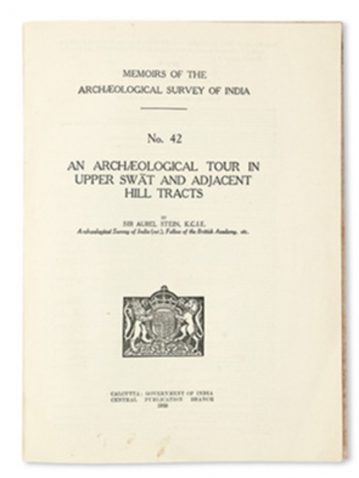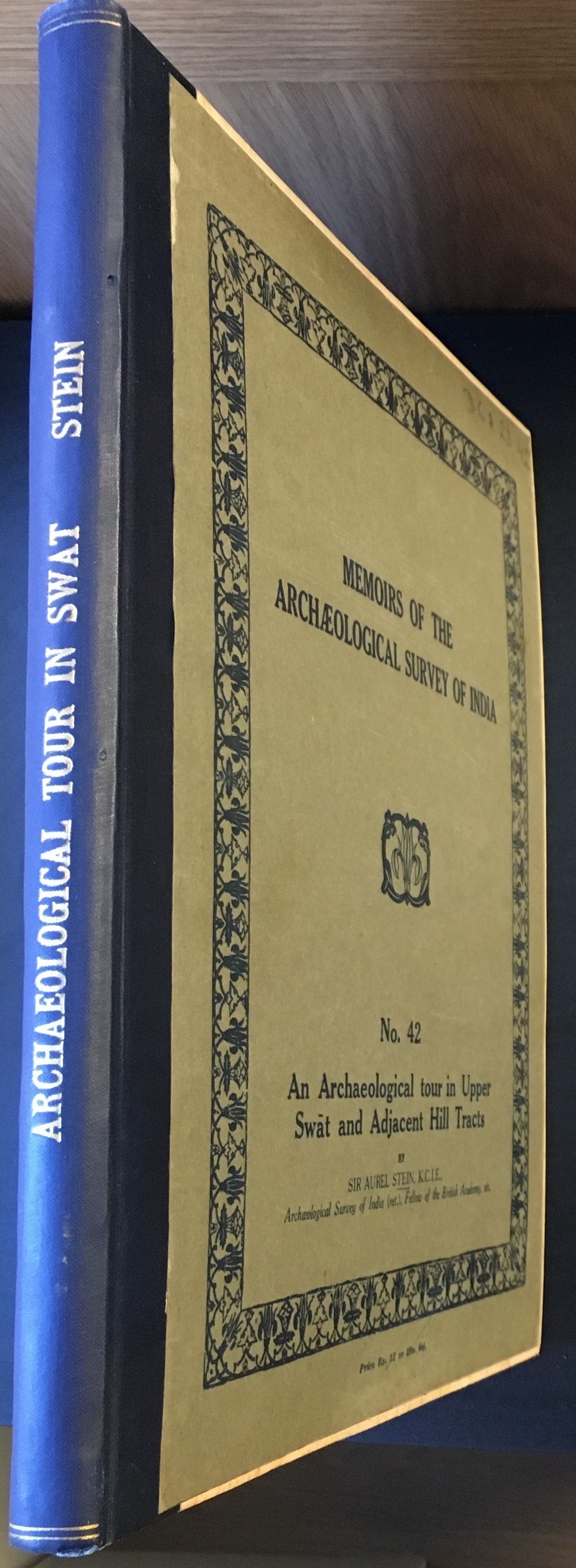An Archaeological Tour in Upper Swat and Adjacent Hill Tracts.
Stein, Marc Aurel.
Synopsis
One of 750 copies only. Sir Aurel Stein’s work in North-West Frontier Province, Pakistan, includes archaeological tours, survey work and excavations carried out during his service in India from 1898 to 1928. Many of the sites visited by Stein had never been explored by Europeans before. Most of them yielded Buddhist remains, though his main interest in the region was to follow Alexander the Great’s route to the Indus. Throughout his work, Stein made attempts to identify sites with references both to Classical and Buddhist sources. Although not all identifications were correct, some proved to be valid and have paved the way for later archaeologists. Stein retired from service in India in 1917 but obtained an extension of service on ‘special duty’ to work on publications, the collections from his third Central Asian expedition and other projects until 1928. It was during this time that he returned to conduct another archaeological tour in Upper Swat, a place he had long wanted to visit, in search of Aornos, the site of Alexander’s last siege before advancing to the Indus. Swat, historically known as Uddyana (lit. Garden) is a river valley and an administrative district in the Khyber Pakhtunkhwa Province of Pakistan. It is the upper valley of the Swat River, which rises in the Hindu Kush range. The capital of Swat is Saidu Sharif, but the main town in the Swat valley is Mingora. It was a princely state until 1969 when it was dissolved alongside the states of Dir and Chitral and made part of Khyber Pakhtunkhwa, then known as North-West Frontier Province. Ethnic Pashtuns and Gujjar and Kohistani communities mostly populate the valley.
Bibliographic references: Creswell, 1282, British Museum/Rienjang; Yakushi S337.








